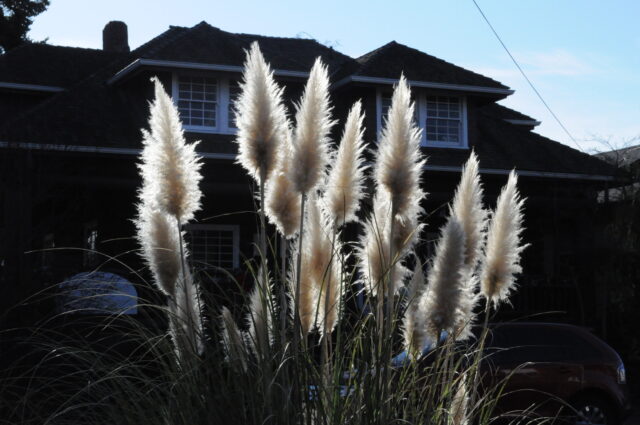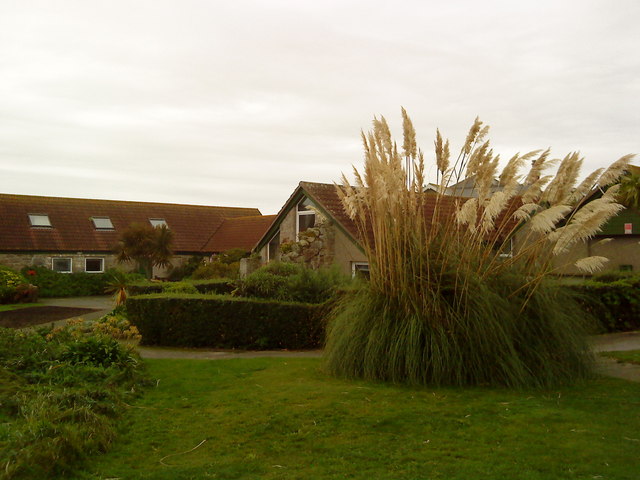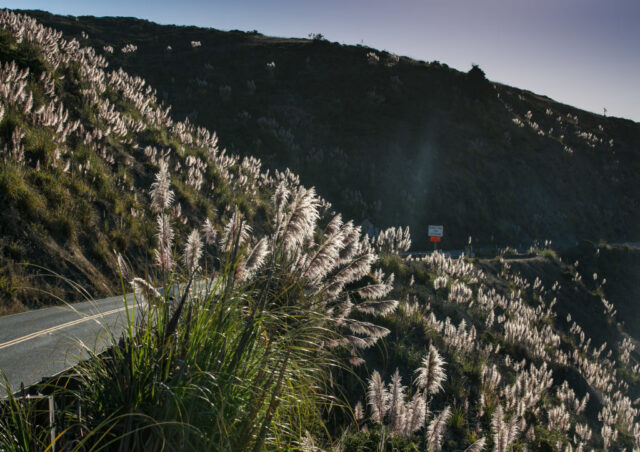Some plants have medicinal properties, others are used in food dishes and some serve their purpose just by being beautiful. Pampas grass, however, has had an interesting objective for decades now: identifying swinger homes. Unable to shake that association, the plant has largely fallen out of fashion.
However, it’s recently seen a surge in popularity within the home, as opposed to outside of it.
An idea sparked in the 1970s

During the sexual revolution of the 1960s and ’70s, pampas grass somehow became linked with “swingers” – people who willingly participate in group sexual activity or the swapping of partners. While there have been many signifiers for swinger households, including pink flamingos and upside-down pineapples, it’s pampas grass that’s inconspicuously signaled outsiders to these homes (or so they say).
The long stalks and fluffy plumes of the pampas plant, when swaying in the wind, create a flowy and rhythmic motion, which may have been the reason why it became so closely associated with swingers. Nowadays, new homeowners are unaware of the message being sent to others while the grass adorns their yards. But once they do, many swiftly remove the plant.
British journalist and presenter Mariella Frostrup recalled being bombarded with calls and visits from strangers inquiring about swinging after noticing the potted pampas grass she’d unknowingly placed outside her residence. Its beauty has attracted many unaware of its underlying meaning – they just want to plant it in their own gardens!
While popular culture has propelled the notion that the plant is a distinct signifier of a swinging household, this claim is rooted in myth. Not all swingers see pampas grass as a symbol of swinging, so it’s still difficult to know for sure if it truly does serve as such.
Pampas grass has largely fallen out of favor

As you can imagine, those who don’t identify as swingers have steered clear of planting pampas grass in their yards, causing it to largely fall out of favor. Sales have dramatically dropped over the decades, with UK plant sellers saying the decline is “in no small part due to the plant being regarded as a secret signal to passers-by.”
However, there may be another reason why pampas grass has fallen out of favor. Adrian Sharp, a plant buyer at The Orchard Garden Centre and Café in Celbridge, Ireland, told The Irish Times:
“Its architectural form, the fact that it was low maintenance and evergreen made it really popular in Ireland about 10 years ago. What everyone wants now is instant colour so the garden looks well when you spend time in it in the summer when barbecuing. They want a modern version of the traditional cottage garden, a space that will encourage wildlife like bees and butterflies; flowers like foxgloves, perennial geraniums and bluebells.”
Additionally, many plant experts have waved off the myth that pampas grass is a sign for swingers and, instead, cite its difficulty to remove as part of the reason why it’s no longer popular. “Its downfall is that is a very big risk plant. It is difficult to handle. Its leaves can cut you like a razor blade when you try to cut it back and it has big root systems,” Sharp explained.
For him, this is more likely the cause for the decline in sales, as he’d never heard of the swinger association before.
Pampas grass is seeing a resurgence in popularity

Despite the long-standing myth, pampas grass has recently seen an uptick in popularity. However, it’s not necessarily in the same form as years prior.
Interior and wedding designers have taken a liking to dried pampas stalks inside the home as a form of decoration, as opposed to being planted and living outside. The stalks hold their shape and the fluffy plumes maintain their wispy look. As well, drying out the plant bleaches the color, making it the perfect addition to boho-themed homes and weddings.
More from us: See Inside the Most Famous Buildings in the World
Loads of people have adopted dried pampas grass inside their homes. We just wonder if it still holds the same double-entendre as before…
